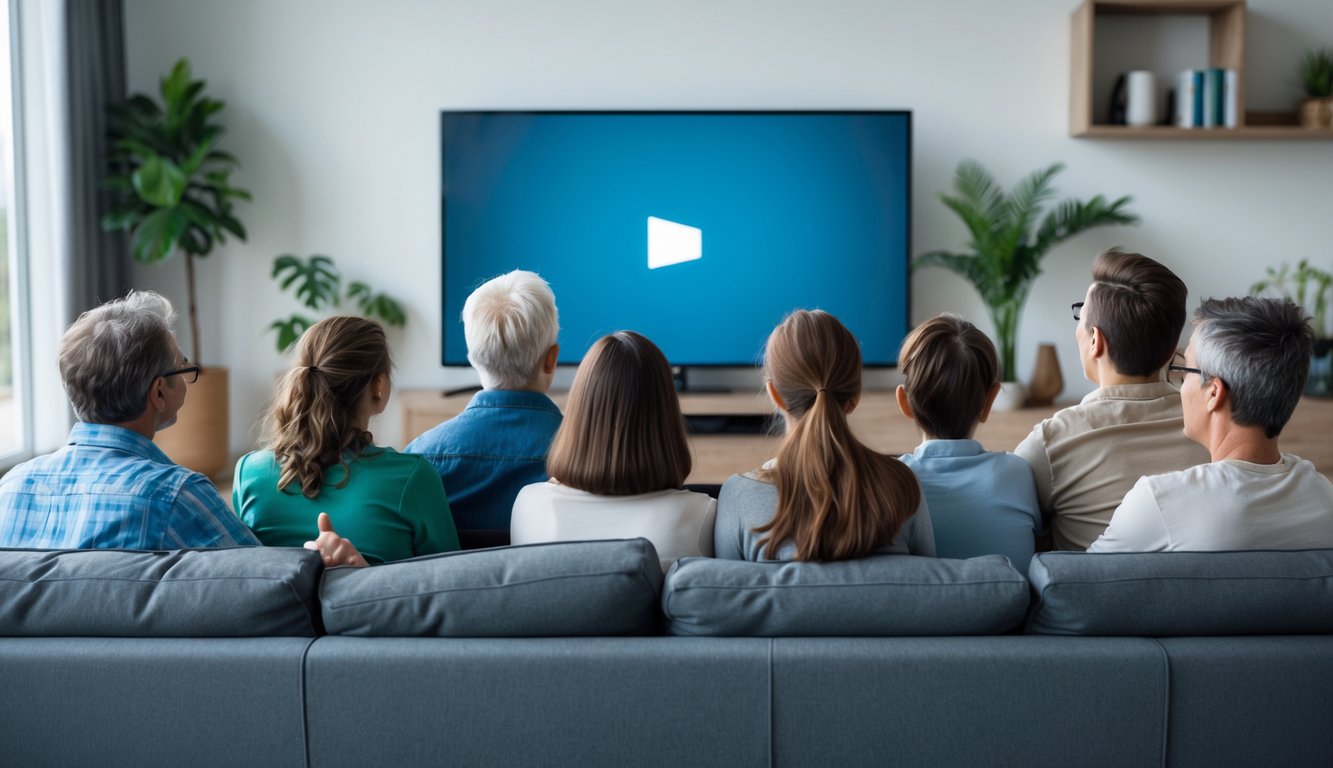
Viewer Reactions: What Audiences Actually Notice

Nobody warned me that a five-second toothpaste ad could mess with my sense of time. Supposed to notice these tweaks and keep up with the plot? I’m more likely to remember how many diaper ads I saw than who the killer was. Brand recall or just my brain short-circuiting?
Changes in Viewing Behavior
First night after the ad breaks changed, my group chat didn’t even notice—except everyone suddenly needed snacks at weird moments. Someone actually asked, “Wait, wasn’t there a commercial here?” Tubular Labs (March 2025) says digital video engagement spiked with younger folks, so maybe all these tweaks are just pushing people away.
Me? I’m just doomscrolling more. If the break’s short, I miss the first scene after because I’m glued to my phone. Maybe these micro-ad slots are why we’re all multitasking now.
My mom thinks “network TV learned from YouTube pre-rolls,” but she still flips between cable and streaming like she’s chasing a prize. I keep toggling settings, hoping the ad sequence will make sense. Sometimes it’s three promos, sometimes a random PSA, and suddenly I have no clue where I am in the show. The only constant? Ads have mutated, not disappeared.
Experience with Disrupted or Seamless Viewing
What’s actually driving me nuts isn’t the ads themselves—it’s the rhythm. Two ad slots back-to-back? I’m hitting mute. One short bumper? Maybe, just maybe, I’ll let Marty finish his monologue. I worked in broadcast programming, so I overthink these “seamless” claims. CNN and Fox News still get a million viewers a day (Q1 2025), but honestly, I only remember the times a key moment got nuked by an insurance jingle. Not about length, it’s about timing. Nielsen says “interruption tolerance” tanks after three breaks per hour, no matter how long they are. Wish showrunners cared.
Or maybe I just don’t notice the seamless stuff anymore—except those awkward AI-inserted local car ads. Did anyone else see that burger promo jammed into a reality show meltdown? Seamless is, uh, relative.
Perceived Value of Shorter and Longer Ads
Five-second ads? Cute for a week, then just noise. A creative director told me, “Short ads have to work harder, but people spot filler instantly.” Give me something useful or clever, or I’m out. If a long ad’s actually good—like a movie trailer—I’ll watch. Nike gets it. Random HVAC company? Nope.
Fun fact: my kid asked if “fast commercials” meant the cartoon would end early. (Do we still get the whole show, Mom?) Nielsen says younger users think short ads are part of the episode, not a network trick. Most adults I know trust longer ads more, but only if they don’t feel forced. If the detergent ad isn’t funny or helpful, I’m just counting ceiling tiles. Not the brand.
The Rise of Connected TV and Its Influence
So, the Roku remote’s missing again. Classic. Almost as predictable as these random ad load spikes that keep catching me off guard. And yeah, Nielsen says streaming hit 44.8% of U.S. TV usage in May 2025, beating cable and broadcast. Not exactly shocking, but still, kind of wild when you actually think about it.
How Connected TVs Are Shaping Ad Dynamics
Honestly, I have no idea when I last sat through regular TV without some streaming ad butting in, mid-conversation, like it owns the place. Connected TVs? Apparently in 80% of U.S. homes (Statista, June 2025), which feels both impressive and weirdly invasive. Ads just chase me everywhere—YouTube, Pluto, Tubi, whatever—like I’m some kind of prize. The ad-tech? Creepy. Dynamic ad insertion, frequency capping, retargeting, all that jazz. It’s like, can I breathe for five minutes without a pizza promo or a car insurance pitch?
I’ve chatted with digital ad buyers—one actually sent me a spreadsheet, which, okay, thanks? “FAST” channel targeting matrices, whatever those are. Wild stuff: ad pods get set up in advance, then some poor soul tweaks them in real time. The TV figures out it’s me, not my roommate. How? No clue, but it’s unsettling. AVOD platforms are in some kind of arms race, so ad blocks get shorter, but somehow more annoying. There’s a part of me that misses those old, predictable two-minute ad breaks during big games. At least you could time your bathroom runs.
Differences in Ad Breaks on Streaming Platforms
Is it just me, or are streaming ad breaks the jump scare of the modern living room? You’re five minutes into a show, then—bam—ad break, like it’s been lurking behind the couch. Hulu and Paramount+? I’ve clocked their breaks; sometimes just 60 seconds, sometimes three staccato interruptions every half hour, especially on Pluto TV. YouTube TV is chaos. Sometimes two ads, sometimes five, sometimes nothing. There’s no pattern. It’s like roulette, but less fun.
Old cable? You could set your watch to those 8 minutes of ads per half hour. Now, streaming likes to stack unskippable pre-rolls and then toss in a midroll for good measure. I pinged a Nielsen rep (she actually responded): ad fatigue among 18-34s is up 17% since 2023, but, bizarrely, satisfaction with ad frequency on CTV is higher than cable. That makes zero sense to me. Maybe it’s the illusion of control, or maybe nobody’s actually watching. Except those kids who think Tubi’s “vintage.” (Seriously, I don’t get it.)



